4-Outer Solar System: Kuiper Belt and Ice Giants
1/47
There's no tags or description
Looks like no tags are added yet.
Name | Mastery | Learn | Test | Matching | Spaced |
|---|
No study sessions yet.
48 Terms
What is meant by outer solar system?
Planetary objects beyond the orbit of the main asteroid belt.
Jupiter, Saturn, Uranus, Neptune, and Kuiper belt objects
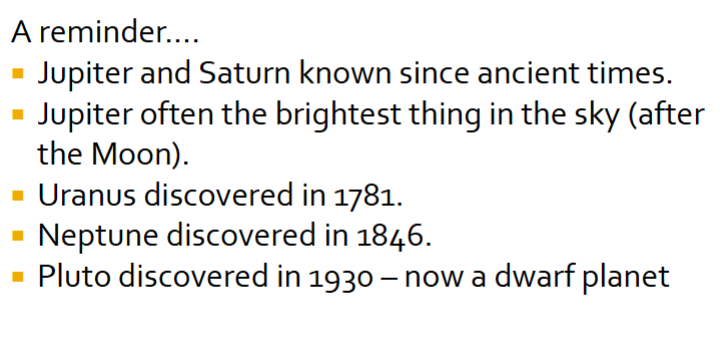
Difference between Kuiper belt and Oort cloud comets?
Kuiper belt - ecliptic plane.
Short period comets come from trans-Neptune orbits and Kuiper belt
Oort cloud - long period comets come from Oort cloud
Orbits outside of ecliptic plane
What is the Oort Cloud?
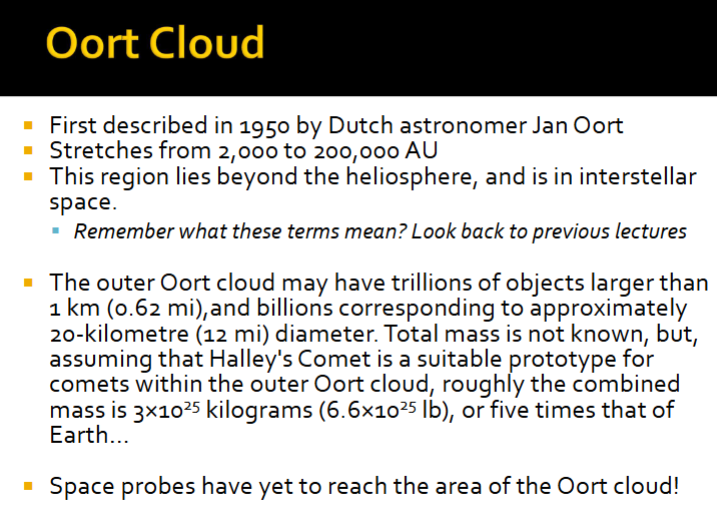
What is the Kuiper belt?
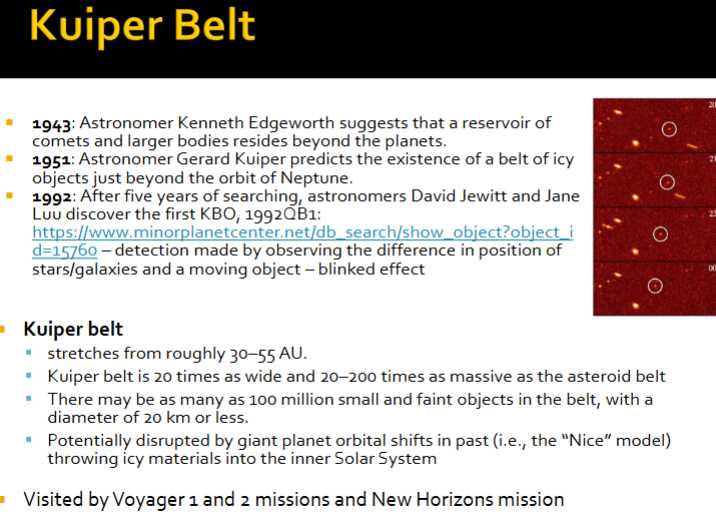
What makes a comet period long or short?
Often comets crash into the Sun, travelling over 20km/s
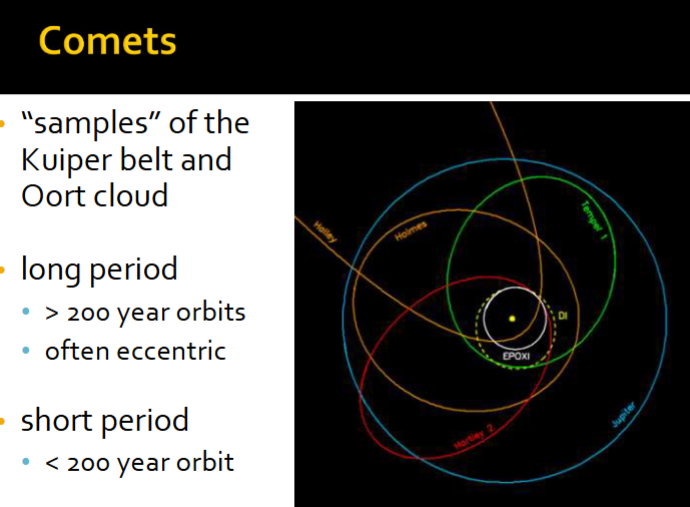
What is a comet made of?
At nucleus - mixture of interplanetary dust particles, silicate minerals, diamond, graphite
Then frozen gas, volatile elements, CO, CO2, H2), NH3….
As approaches sun, frozen stuff converted to liquid, or most commonly straight into a gas - SUBLIMATION
Outside - debris from ice to gas state, stuff that makes up tail
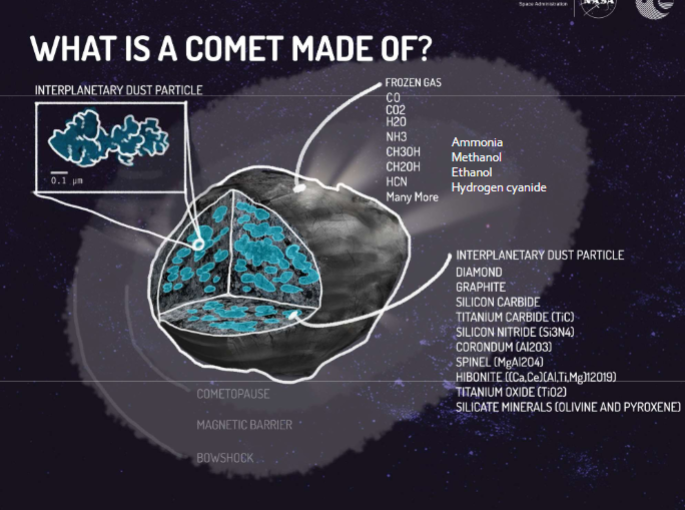
How do we have organics on comets, as there is no life?
Simple organic compounds initially formed by action of radiation (cosmic rays) on ices, modified by further radiation, heat and pressure to form more complex molecules
e.g. CH3OH methanol, ethane, methane, HCN
What is the Bayeux Tapestry?
Halley’s comet depicted, seen as a fearful doom.
How do comet missions work as we don’t go out into outer solar system?
Inner solar system missions to comets that have travelled from deep space to be close to the earth.
What is the mission deep impact that targeted Temp 1?
two spacecraft, observing orbiting, and hard lander probe, had a camera on board.
chemistry and structure of comet
What was the stardust Nasa mission to Wild 2?
Sample return mission, spacecraft flew through dusty tail of comet, and collected samples of dust and gas emitted from comet’s nucleus.
Particle tracks from cometary tail material with impacting aerogel, preserved dust of comet
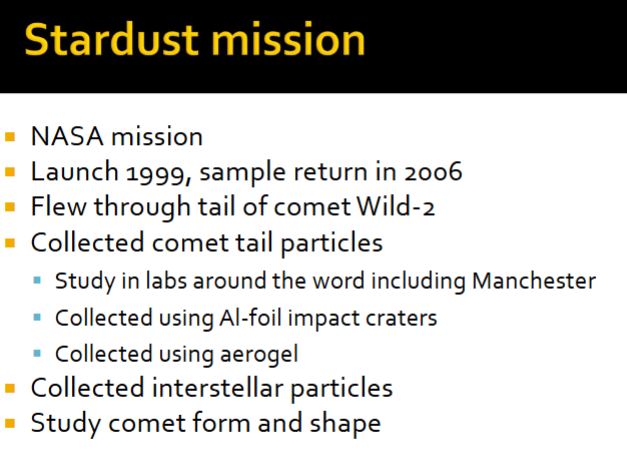
What were the results of the stardust mission?
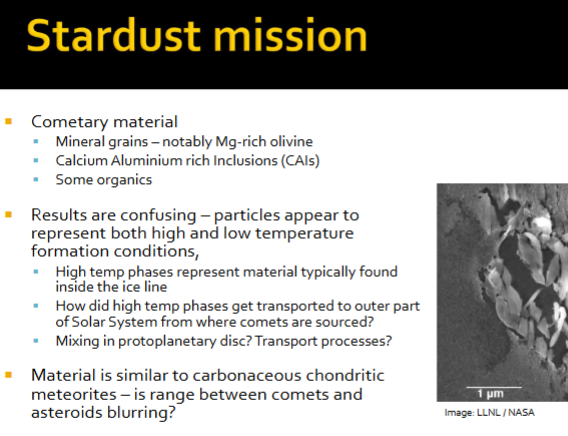
What is the Rosetta mission?
Rosetta mission visiting 67P, looks like 2 parts colliding coming together.
Rosetta deployed a soft lander called Philae; land on surface, and clamp to surface.
Engineering fault - harpoons failed to deploy, landed sideways.
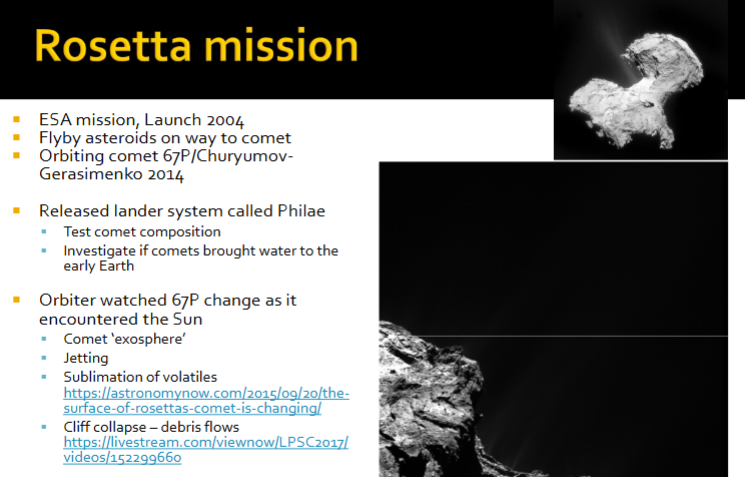
What was conclusions form Rosetta mission’s Philae lander?
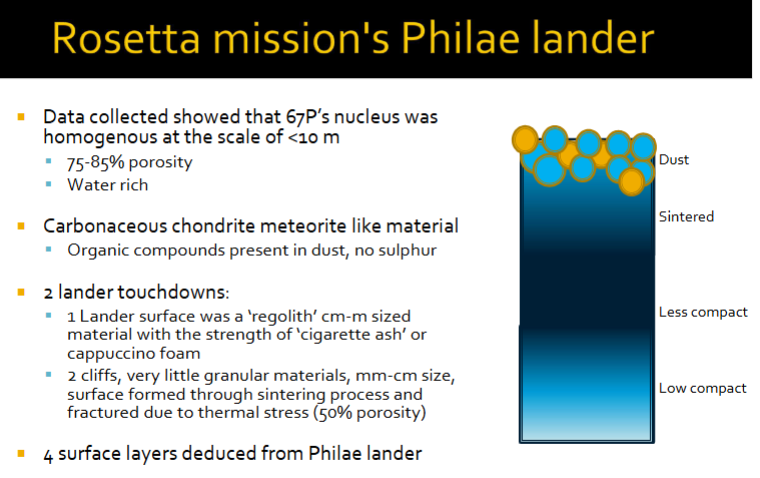
What is a meteor shower?
A meteor shower happens when Earth passes through a trail of debris left behind by a comet
Use of high flying aircrafts to collect dust.
How do we get power for outer solar system missions?
Nuclear power - radiogenic isotopes.
Solar panels
Need radiation shielding to protect against strong magnetic fields
What were the first missions to reach the outer solar system?
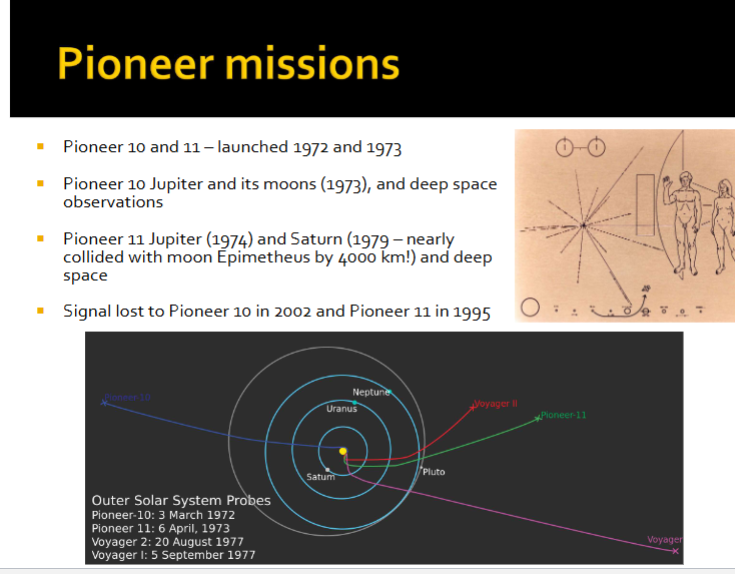
What science instruments can be taken on board pioneer missions?

What are the voyager missions?
Voyager missions to go out to outer solar system.
both V1 and 2 - past jupiter and saturn
Voyager 2 -passed by Uranus and Neptune.
Contains vinyl showing music/poetry on earth.
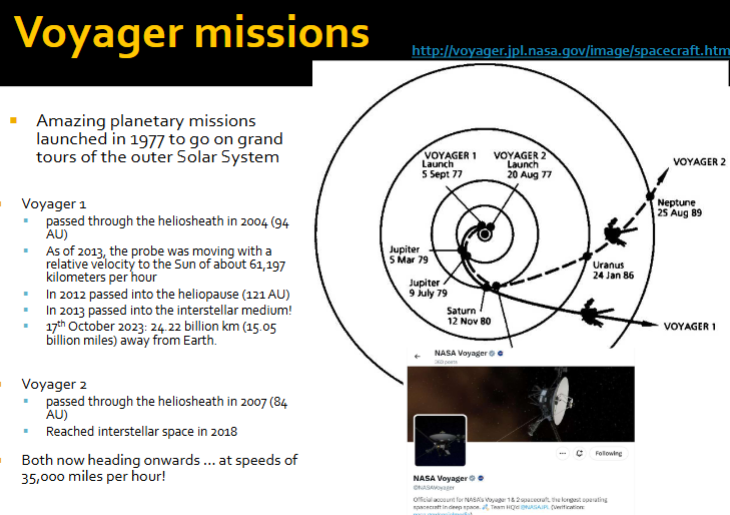
What instruments onboard voyager missions?
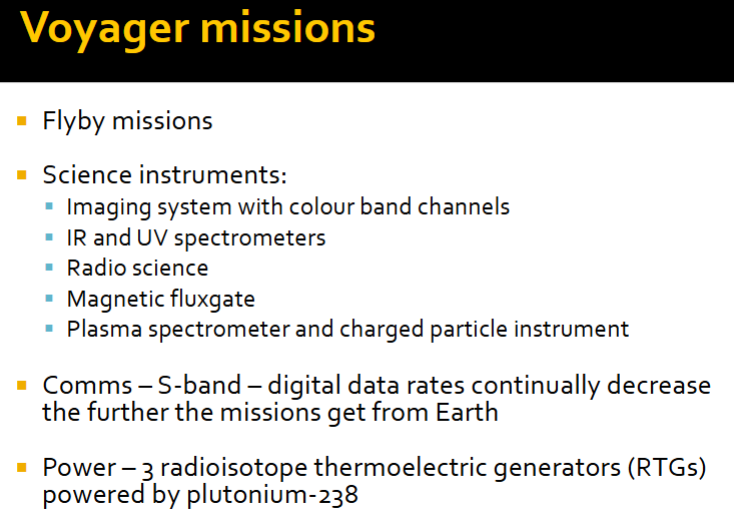
What is the New Horizons flyby mission?
Two lobe likely merged in a slow collision
Arrokoth: Ultima larger lobe, and Thule smaller lobe
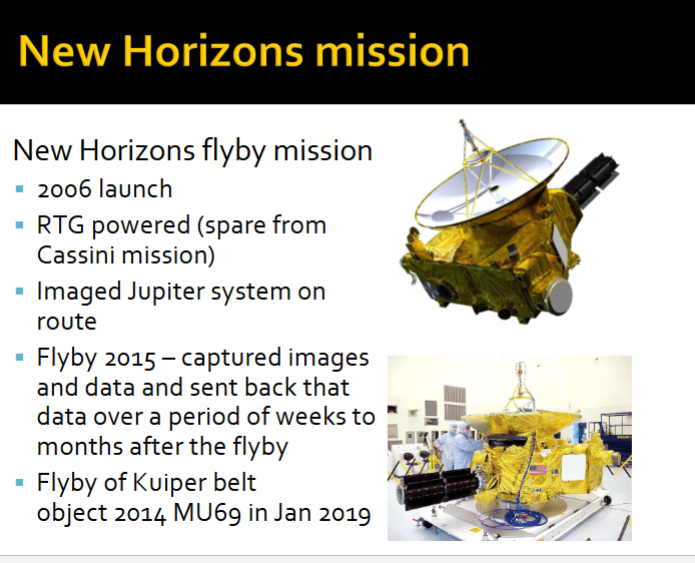
What is structure of pluto and one of its moons’ charon?
W
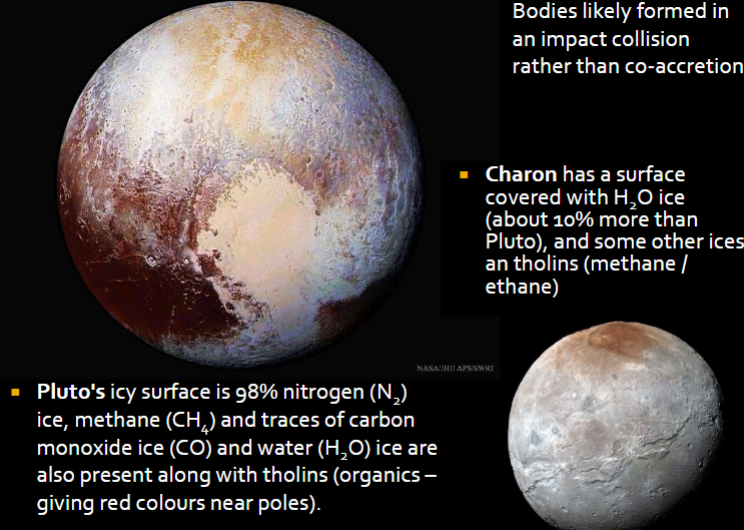
What is pluto’s atmosphere like?
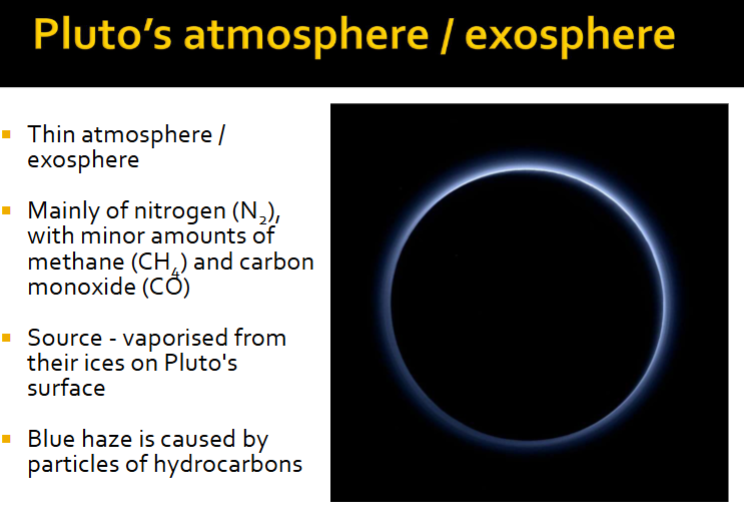
What is the geology like on pluto?
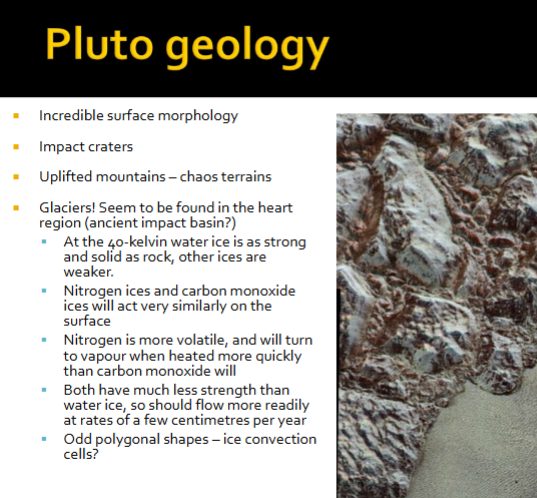
What is the difference between gas giants and ice giants?
Gas giants, Jupiter, and Saturn, both more than 90% hydrogen and helium
Ice giants consist of only about 20% hydrogen and helium in mass
Mantles of ice giants Uranus and Neptune are composed of heavier elements.
Tell me about neptune:

Tell me about Neptune’s largest moon:
Triton
surface composed of solid mixtures of nitrogen, methane
very thin atmosphere of nitrogen
ices present N2, H2o, CO2, CH4
surface temp 38K, -235C
2061kg/m3
Only satellite in solar system to circle a planet in a retrograde direction (opposite way to planet’s rotation)
Triton’s orientation and orbits are evidence that it is a captured body.
-Triton eventually migrated inwards from Kuiper belt, ejected all of pre-existing outer moons of Neptune, brought into a tidally locked, circular orbit around Neptune
Triton has geyers and potentail subsurface oceans.
Tel me about Uranus:
e.g. moons like Ariel, Miranda
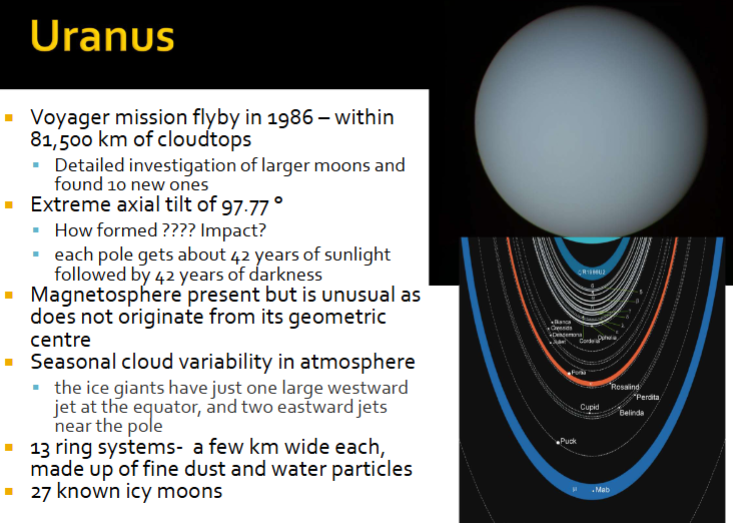
How do we age data planets?
rock samples using carbon dating
impact craters
Need rock samples → sample return mission
Meteorites
In situ via an instrument e.g. on Mars curiosity rover
How do we measure the nature of planetary surfaces?
Topography - shadows of surface features, laser altimeters
Morphology - bodies with thick atmosphere, radar to see through, airless bodies. Receiver and detector.
Chemistry and mineralogy - different EM waves
With use of radar, was kind of signal received tell us about the surface?
Bright reflectance = rough surface/slope
Smooth reflectance = smooth target
How do we determine the interior of planetary bodies?
remotely
gravity, use of mass radius density can tell us about distribution of mass
crustal thickness and type of rocks on planet
geological - volcanic centres, impact crater peaks
seismicity, passive (natural) and active (man-made)
How do we investigate habitability of extant life and extinct life?
Conditions at present day: Extant life
biomarkers, chemistry limits (H2O, pH, nutrient), temperature, pressure, radiation protection
Extinct life:
condition in past, fossils, biomarkers
How do we investigate space-planet interactions?
imaging systems (spectrometers, coronographs)
magnetic fields, magnetometer
plasma environments, charged particles ions and electrons
atmospheric composition/density/temperature
What is the main differences between uranus and neptune?
uranus has an extreme axial tilt (98), sluggish atmosphere, and little internal heat
neptune has more earth-like tilt (28), emits twice the energy it receives, displays highly active weather
Differences may results from giant impacts in early history
What is the internal composition like of these ice giants?
10-20% hydrogen and helium
Mix of rock, ices and heavy elements.
May contain supersonic water ice - an exotic high pressure form
Future mission to observe these ice giants? and what challenges are there?
NASA and ESA joint mission for 2030s using Jupiter gravity assist.
Challenges: long travel times 8-12 years, limited power, and weak communications
Which method did the Kepler telescope use to observe exoplanets?
Transit
What is primary crust formed by?
Primary crust - magma oceans
Secondary crust - volcanoes
What type of meteorite hosts calcium aluminium-rich inclusions?
Carbonaceous chondrite.
Chondrites have chondrules - little melt droplets
What is the Grand Tack Model?
The Grand Tack model suggests Jupiter and Saturn moved in and then out during the Solar System’s early days, shaping the planets’ sizes and orbits we see today
(focus on inner SS)
4.5 billion years ago
What is the nice model?
The Nice model says the giant planets migrated from a compact formation to their current orbits, reshaping the Solar System.
(focus on outer SS)
3.9 billion years ago
If there is more craters, what does this tell us about the age?
More craters = older
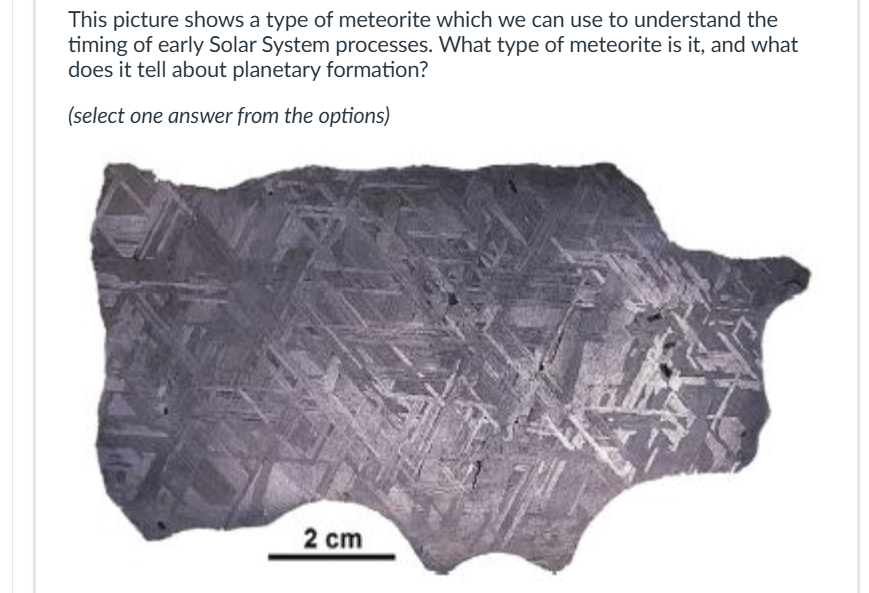
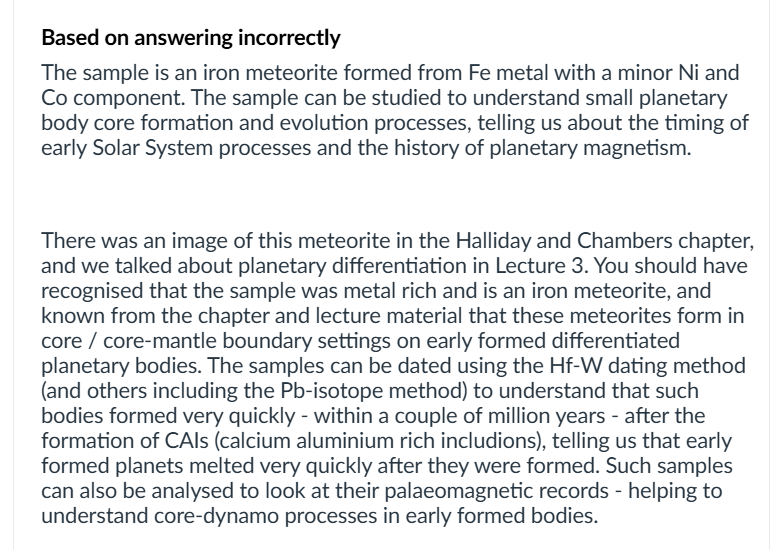
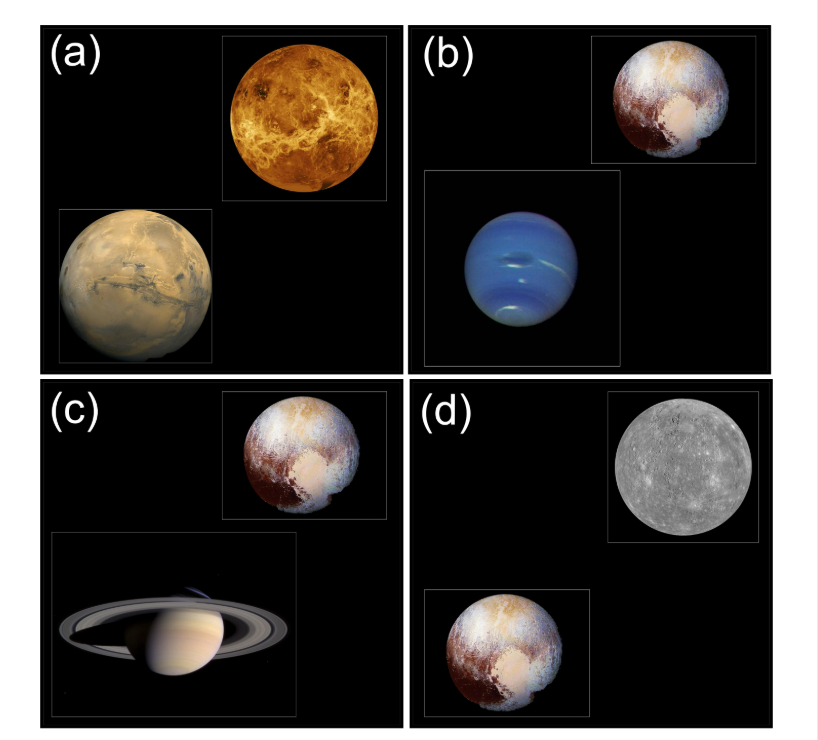
Which set of photos shows planetary bodies that were discovered by naked eye observations?
A, depicts Mars lower left and Venus (without its cloud cover) top right. Both planets have been known .
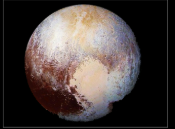
What planetary body is this?
Pluto
Several planets in SS generate large magnetic fields. When these fields interact with solar wind they form a magnetosphere which deflects the solar wind away from the planet. Which of the following bodies have a magnetosphere at the present day?
Mercury, Earth, Jupiter, Saturn
Uranus and Neptune also have magnetic fields.
Not in Moon and Mars.

True, composition of the solar nebula apx. 4.5 billions year old, has been inherited from the cumulative prior 9.3 billions years